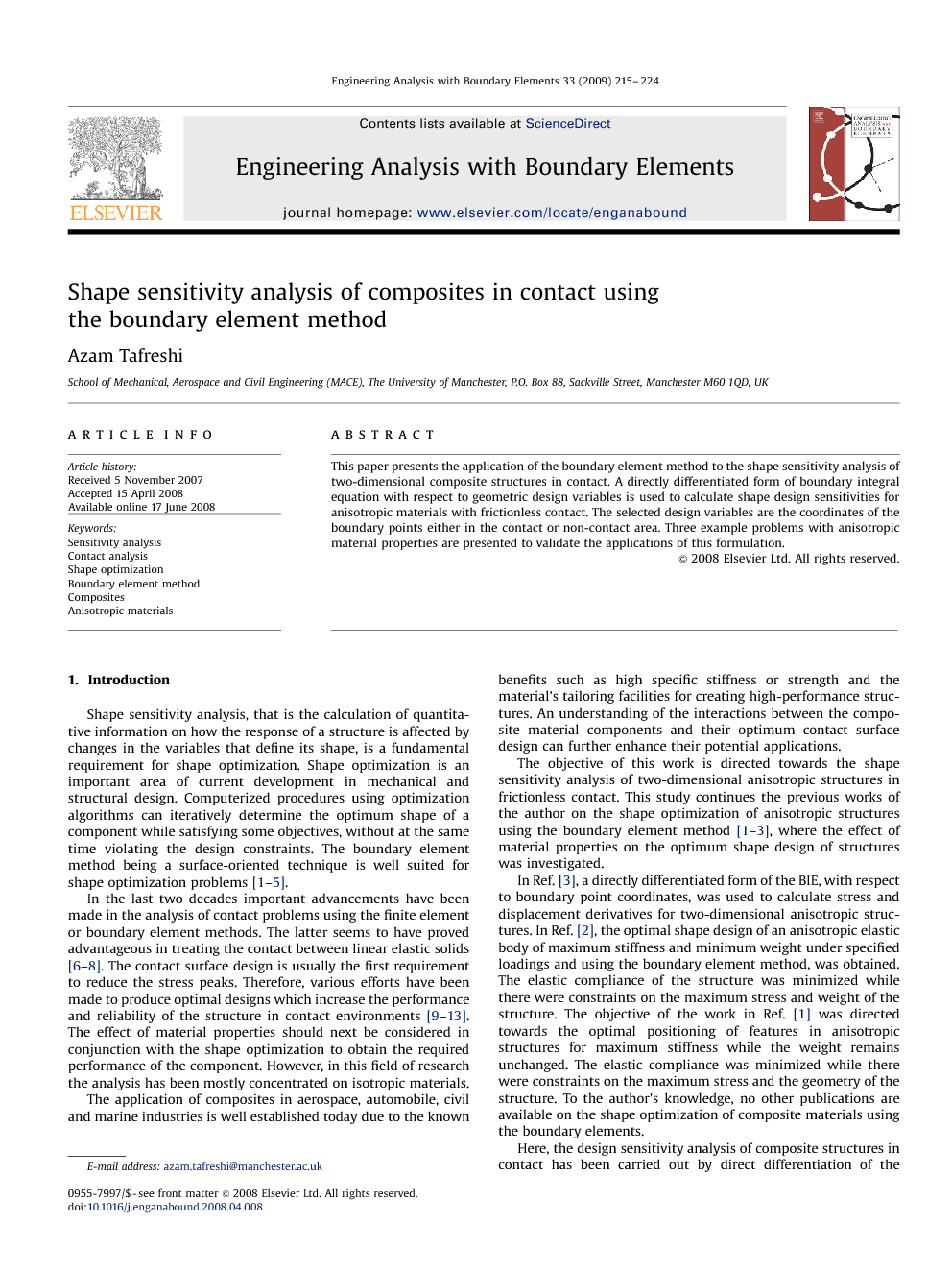ترجمه فارسی عنوان مقاله
تجزیه و تحلیل حساسیت شکلی از کامپوزیت های در تماس با استفاده از روش المان مرزی
عنوان انگلیسی
Shape sensitivity analysis of composites in contact using the boundary element method
| کد مقاله | سال انتشار | تعداد صفحات مقاله انگلیسی |
|---|---|---|
| 26032 | 2009 | 10 صفحه PDF |
منبع

Publisher : Elsevier - Science Direct (الزویر - ساینس دایرکت)
Journal : Engineering Analysis with Boundary Elements, Volume 33, Issue 2, February 2009, Pages 215–224
ترجمه کلمات کلیدی
تجزیه و تحلیل حساسیت -
تجزیه و تحلیل تماس -
شکل بهینه سازی -
روش المان مرزی -
کائوچو و مواد مرکب -
مواد ناهمسانگرد -
کلمات کلیدی انگلیسی
Sensitivity analysis,
Contact analysis,
Shape optimization,
Boundary element method,
Composites,
Anisotropic materials,

